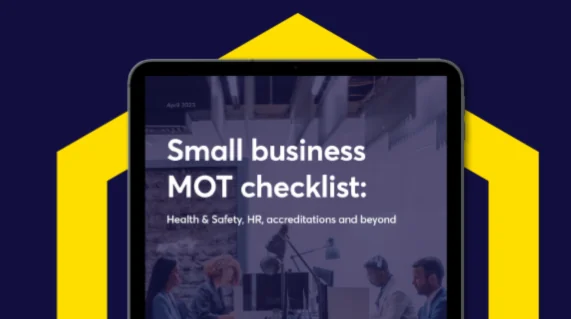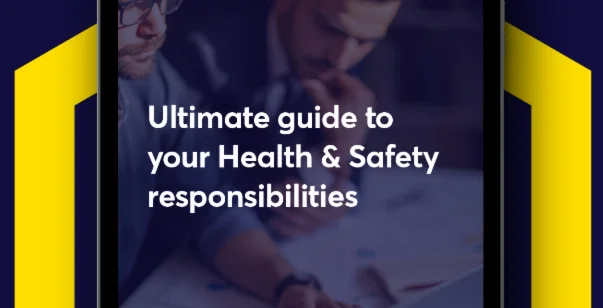In the construction industry, scaffolding is an essential part of the job, and it’s crucial to safely conduct tasks on buildings, bridges and other large projects. However, without strict safety measures in place, scaffolding can become dangerous. This blog will cover common scaffolding risks and how business owners like you can reduce them effectively.
Major risks of scaffolding
Falls from height
Falls are among the leading causes of injuries and fatalities in the construction industry – in fact, in 2022/23, 51% of all construction fatalities were falls from height. It’s good to think about things like harnesses, guardrails and fall protection systems, as well as safety nets for an additional layer of security.
Structural instability
Incorrect scaffolding construction can have hefty consequences, including collapses. Make sure the ground is level and that scaffolding is put up according to the right design specifications, and carry out frequent inspections and maintenance to maintain the integrity of the scaffolding. Even minor issues can cause bigger ones if they’re left unaddressed, so make sure repairs are made quickly.
Falling objects
Materials, tools and debris falling from scaffolds can cause serious harm to workers below. This risk can be reduced by installing toeboards and guardrails, which can prevent items from slipping off the edge. As well as this, workers should be provided with personal protective equipment (PPE) like helmets to protect them from falling objects.
Make sure you regularly remind workers to secure their tools and materials to minimise risks. Keeping the work environment tidy can also reduce scaffolding risks, with routine clean-ups and organised storage of materials to reduce the likelihood of accidents – and this will improve operational efficiency too.
Electrocution
Electrocution is one of the most common injuries that result from working on a scaffold, as workers can get electrocuted if they come into contact with exposed wires. Training workers to recognise and respond to electrical hazards is really important so they can understand the dangers and take any necessary precautions to avoid electrocution. Proper insulation and grounding methods, along with regular safety briefings can protect workers from electrical risks.
Common causes of scaffolding accidents
Inadequate training
A big contributor to scaffolding accidents is the lack of proper training. Workers who aren’t trained properly in scaffold safety might misuse equipment or end up overlooking critical safety procedures. Your training programmes should cover scaffold assembly, safe usage and emergency procedures. Training encourages a culture of continuous learning and safety, so regular refresher courses help reinforce best practices and keep safety at the top of the priority list.
Improper use of ladders
Ladders are often used to access scaffolds, but using them incorrectly can lead to accidents. It’s important to make sure ladders are secured, properly positioned and the weight is properly distributed to reduce the risk of falls. Supervisors should routinely check that ladders are in good condition and correctly installed. It’s also worth considering installing other access points like stair towers, to offer safer alternatives to ladders.
Read our blog on how to use ladders safely at work for more information. We also offer a ladders and step ladders e-learning course to help make sure staff follow safe practices at all times.
Overloading scaffolds
It’s important not to exceed the load capacity of scaffolds, as this can lead to structural failure. Workers need to be trained to recognise load limits and the importance of weight distribution. Regular inspections should be carried out to make sure you’re staying compliant with load ratings, and implementing strict load management policies can prevent overloading.
Control measures for scaffolding safety
Inspection and maintenance
It’s crucial to regularly check scaffolds to identify issues like wear, damage or structural concerns. Inspections should be thorough and cover all parts of the scaffold. Damaged parts should be repaired or replaced immediately, and regular maintenance makes sure that the scaffold stays in optimal condition to reduce the risk of accidents.
There should be a competent person on your site to oversee inspections and maintenance, and their expertise can ensure that issues are identified and corrected quickly.
Use of personal protective equipment (PPE)
PPE is vital for reducing the risks of scaffolding. Workers should be equipped with helmets, gloves and non-slip footwear to protect against possible hazards.
Workers should also be trained in using PPE correctly, and all their PPE should be fitted to them properly. It’s important to regularly review PPE policies and procedures and make sure workers are aware of the importance of PPE.
Weather considerations
Adverse weather conditions can impact scaffold stability. Wind, rain, or ice can make working conditions hazardous, increasing the risk of accidents. Training workers to recognise and respond to weather-related risks is important so they have the knowledge to be able to take necessary precautions to maintain safety. Putting protocols in place for adverse weather, such as halting work during storms or high winds, can prevent weather-related accidents.
Stay on the right side of safety with HS Direct
Want to make sure you’re doing everything right when it comes to Health & Safety on scaffolds? Check out our Scaffold Risk Assessment and our Working at Height e-learning course to get a taste of the support HS Direct can offer.
At HS Direct, we have a range of risk assessments and method statements that are useful in many areas. Why not take a look at our Health & Safety software solutions to help your business remain compliant with regulations and become Health & Safety efficient?
Want to chat to an expert about your Health & Safety needs? Call us on 0114 244 4461 or contact us to request a callback.





